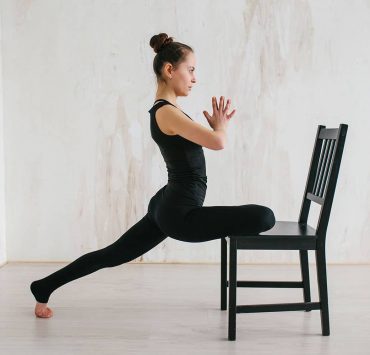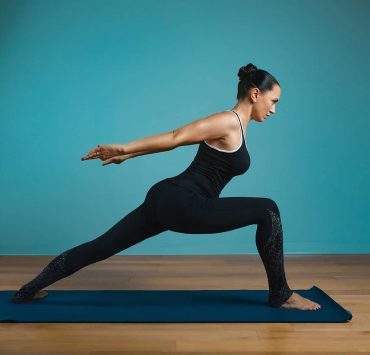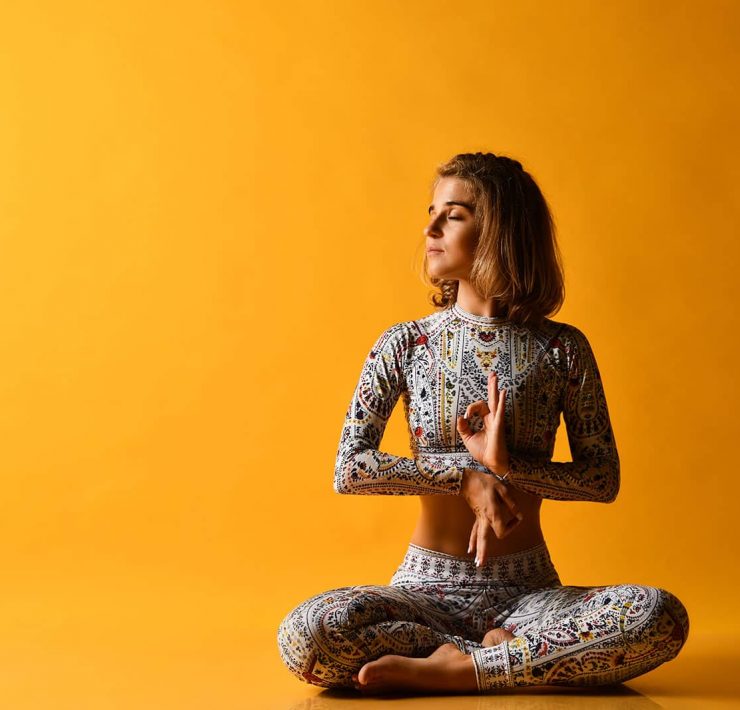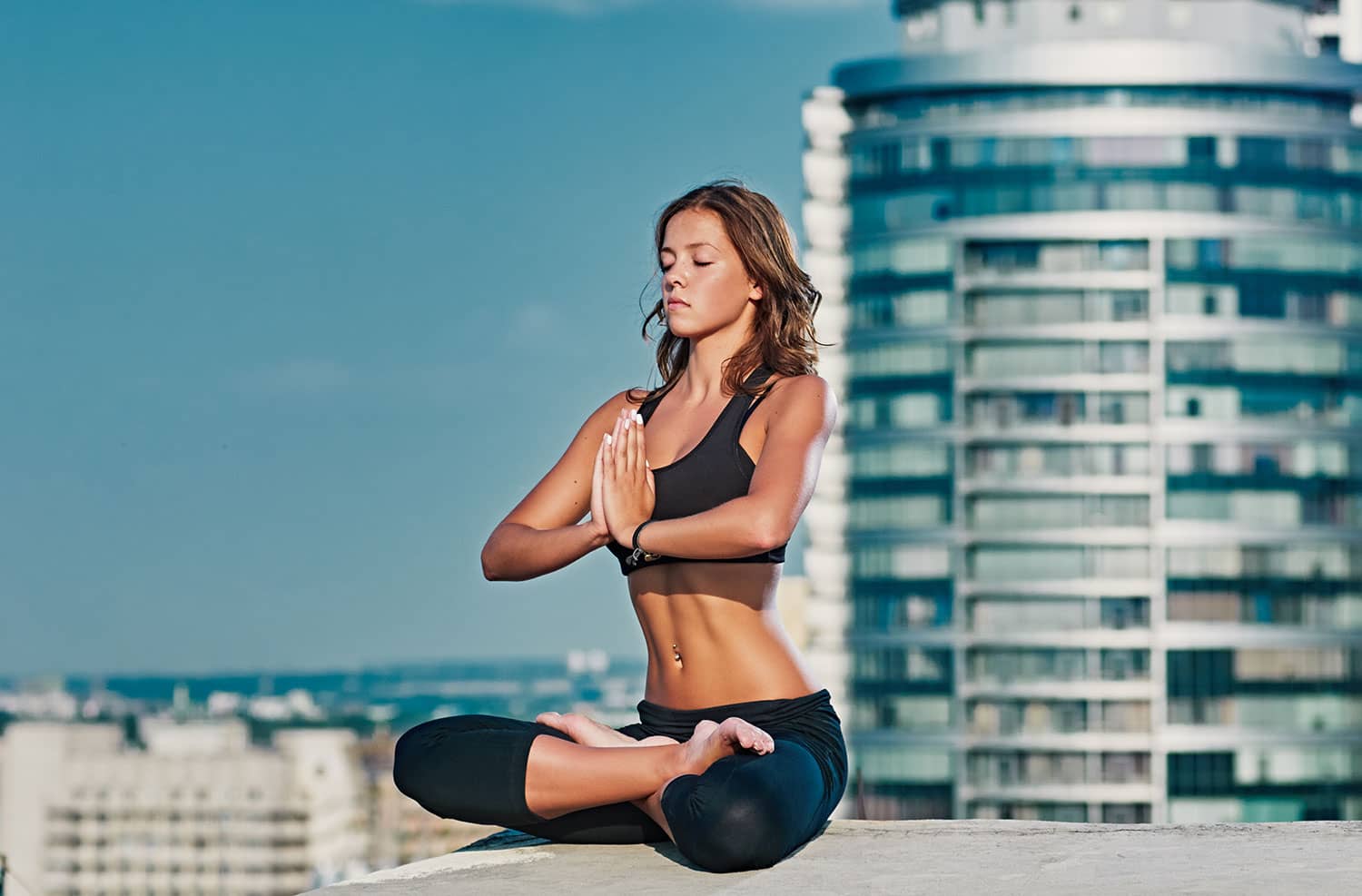
Meditation coach Emma Morrison is the go-to person for those…
Sun Salutations are a great way to start your yoga practice. They can also incorporate a more spiritual aspect into your routine. Surya Namaskar brings a sense of sacredness. It allows you to honor the creation of all beings.
Adding Sun Salutation Mantras can elevate this practice further.
Mantras are intonations that connect the mind and body to Supreme Consciousness. They allow you to reap the maximum benefits of your practice.
But only if you practice regularly.
History of Surya Namaskar
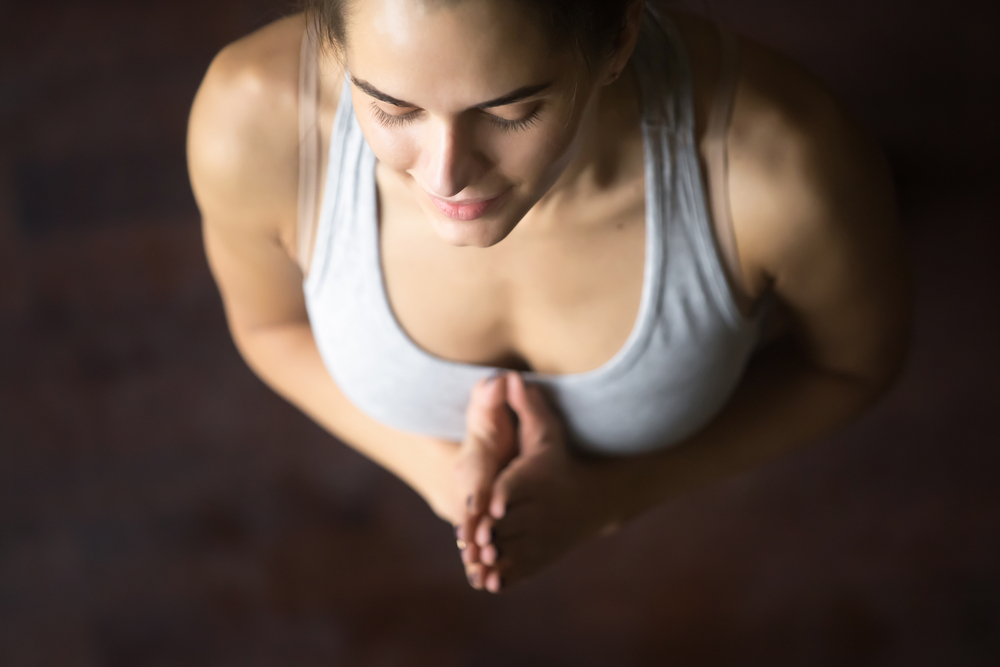
Yoga was developed over 5,000 years ago by ancient sages in India. They believed that each part of the body was linked to a certain aspect of the natural world. For example, they understood the Solar Plexus to be intimately connected to the Sun.
The state of one’s Solar Plexus is said to be linked to their emotions and intuition. This is where the term “gut feeling” originated from.
Sages prescribed that practicing Sun Salutations in order can expand the Solar Plexus. This helps a practitioner achieve increased mental clarity.
It can also heighten their intuition and allow them a tranquil emotional state.
Without the sun, life on Earth is impossible. All life on this planet requires energy for survival. And all energy in Earth’s biosphere originates from the sun.
Sun Salutations provide an opportunity to offer gratitude.
In practice, you can thank the sun for giving the light of life. In a broader sense, this practice invites us to recognize our existence.
We are dependent on something bigger than ourselves. And that is cause for gratitude.
Benefits of Surya Namaskar
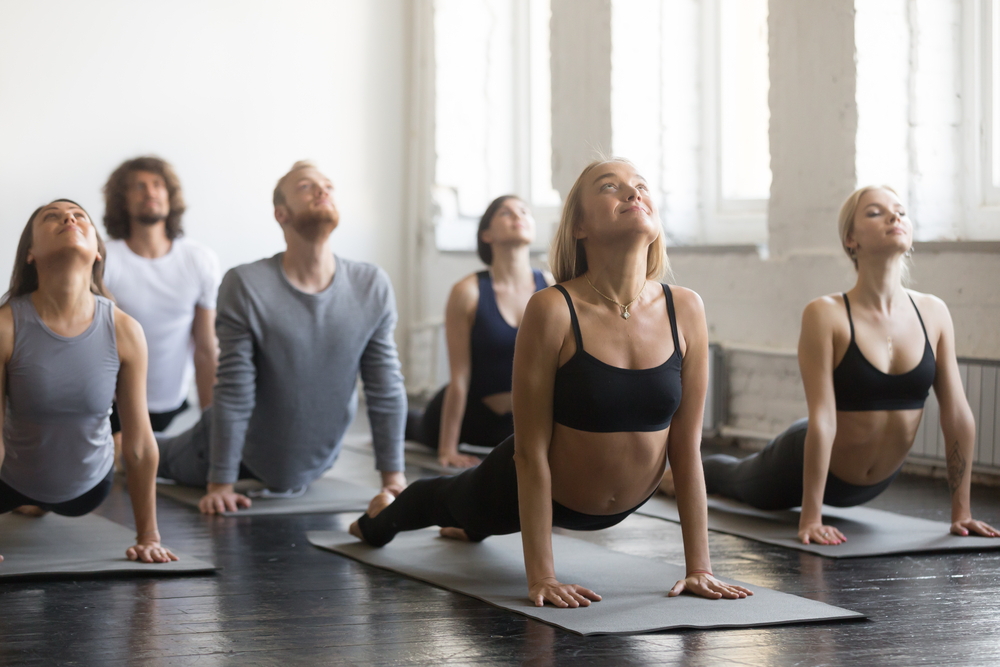
Sun Salutations are one of the best ways to energize the body.
It sharpens the mind and starts the day with intention and gratitude.
Surya Namaskar is a yogic technique. It consists of twelve postures. And those postures are to be practiced in consequence sequence.
Repeating this sequence several times can be an invigorating warm-up prior to a yoga routine. But if you only have a few minutes to spare, Sun Salutations can be a full practice on their own. They are a complete exercise that engages every part of the body.
As the name suggests, sunrise is the ideal time for this yoga routine.
It lays a positive foundation for the rest of the day. It synchronizes the body with the rhythms of nature. And it engages the core, stretches the hamstrings, and loosens the shoulders.
Regular practice can improve blood circulation throughout the entire body. It massages the internal organs and promotes overall health.
This practice is very versatile and can be adapted to each individual’s needs.
When practiced at a fast pace, this technique provides a cardiovascular workout. When practiced slower, this routine can be calming and grounding.
Adding mantras can help provide a more spiritual layer.
What Are the 12 Sun Salutation Mantras?
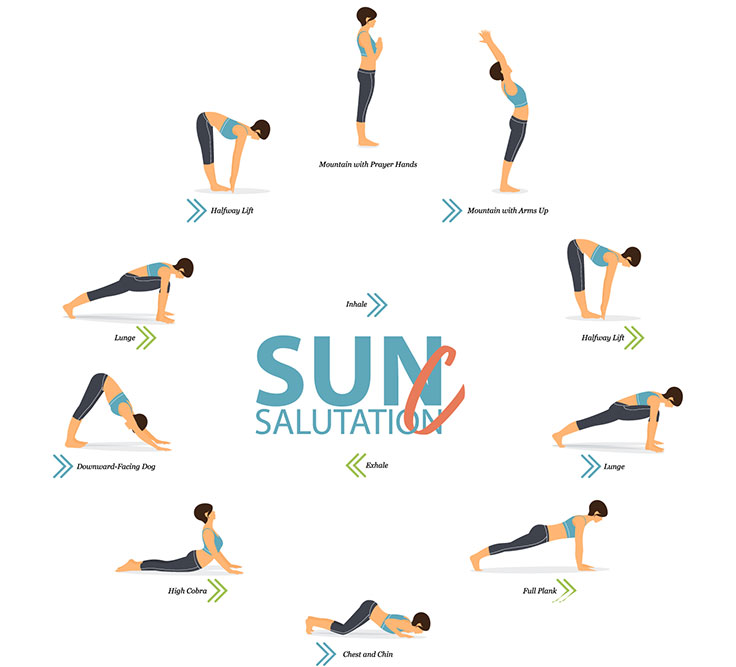
Mantras refer to a combination of syllables, sounds, and phrases. They can be chanted or sung. During Sun Salutations, you are praising the Sun.
Chanting mantras can extend the benefits of Sun Salutations. It provides a subtle yet penetrating effect on the body and mind.
The 12 mantras praise different qualities of the Sun. They also add a profound spiritual touch to your practice.
How to Chant Surya Namaskar Mantras
There is only one rule with these chants. Chant with gratitude. Each Sun Salutation mantra has a specific meaning. It is not always important to delve into each meaning. But it can help enhance the practice overall.
You can either chant these mantras verbally or in your mind.
One set of Sun Salutation comprises of two rounds for both sides of the body. Ideally, it is recommended that you practice 12 sets daily. But you might not always have the time to do so.
Do not be hard on yourself if that is the case. Just do what you can each day.
If you choose to do 6 sets or more, chant one mantra each at the start of every new sequence. Recite the first mantra as you start one set. Finish two rounds in that set. Then start your next set with the second mantra.
This way, you will chant 12 mantras with 12 sets of Sun Salutation.
If you practice less than 12 rounds of Sun Salutation, you can recite one mantra each with every posture. This makes 12 mantras with 12 poses.
#1 Pranamasana — Prayer Pose
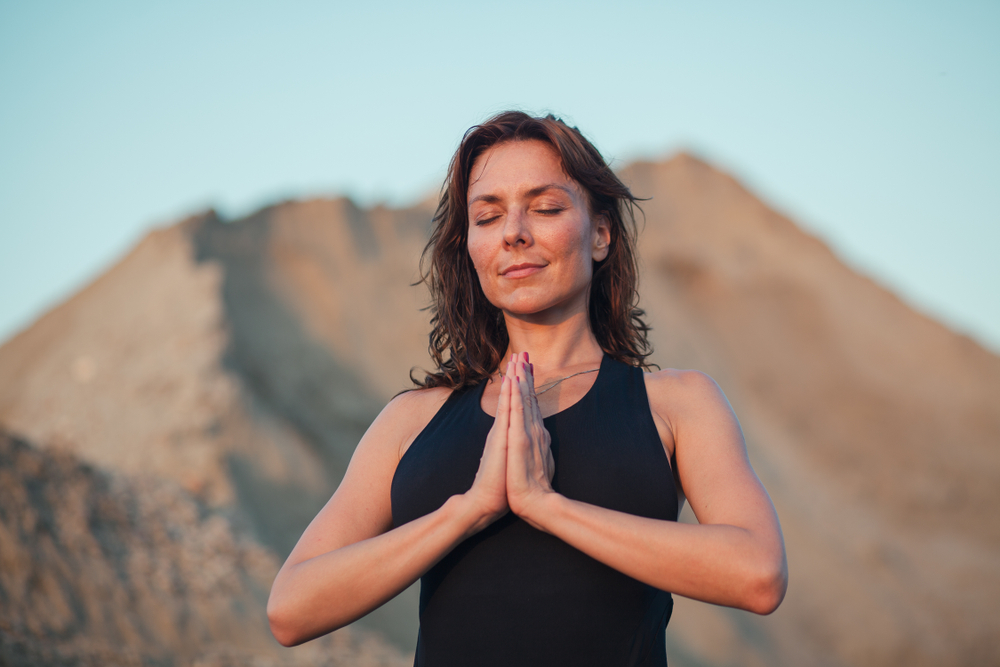
Chant: Om Mitraaya Namaha
Meaning: Who is friendly to all
This pose guides the heart chakra. It calms the mind and body and can improve posture. Additionally, it enhances focus and concentration.
Start in a standing position with your feet together. Keep your back straight and look forward. Exhale all of the air out of your lungs.
#2 Hastauttanasana — Raised Arms Pose
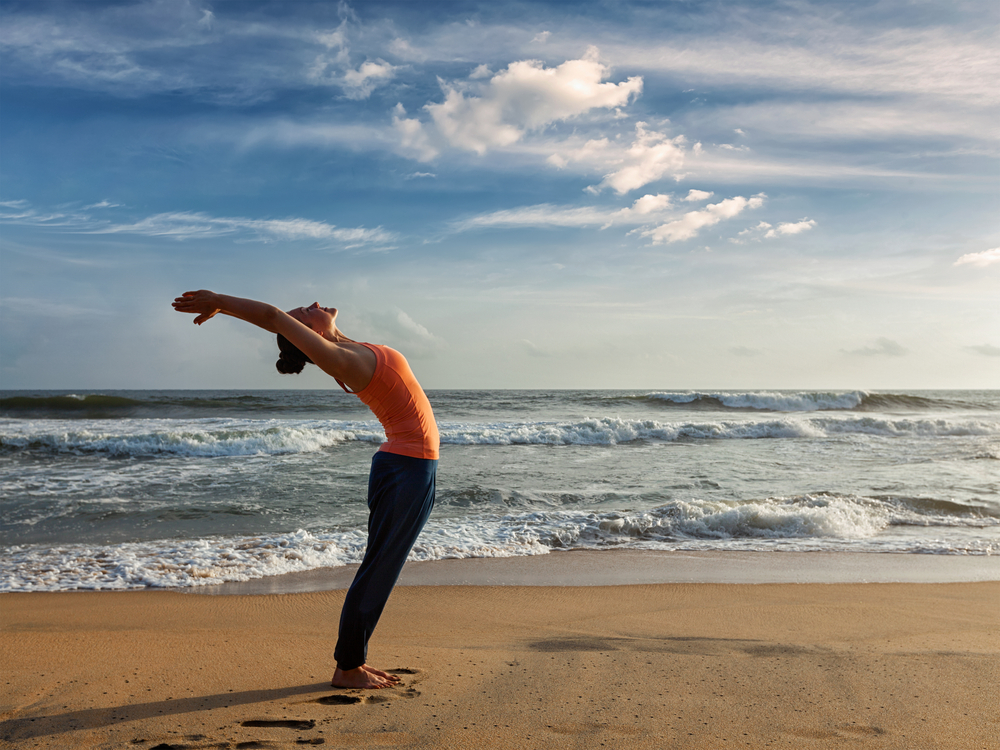
Chant: Om Ravaya Namaha
Meaning: The shining one, the radiant one
This pose guides the throat chakra. It stretches the chest and abdomen while creating space in the lungs.
It can also improve digestion and relieve anxiety and fatigue.
Inhale and lift your arms up overhead. Arch your back and lift your gaze. Come into a slight backend. Only bend as much as is comfortable for you.
#3 Hasta Padasana — Hand to Foot Pose
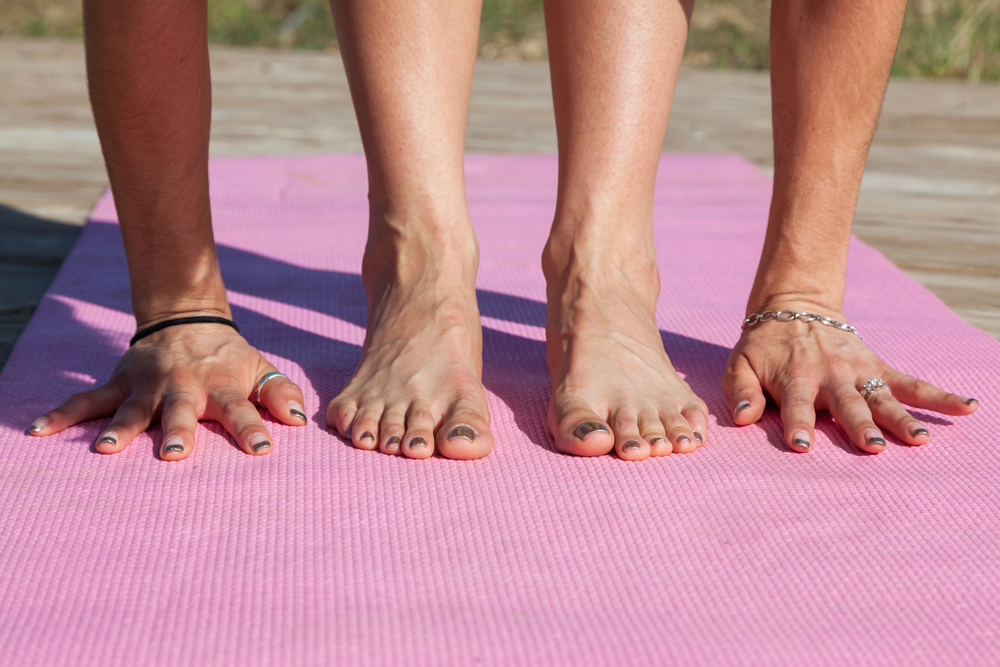
Chant: Om Suryaya Namaha
Meaning: Who is the dispelled of darkness and responsible for bringing activity
The sacral chakra is influenced by this pose and cantation.
It stretches the spine, hips, hamstrings, and calves. Hasta Padasana can also reduce stress, anxiety, and fatigue while relieving tension in the neck and back.
Bring your hands into a prayer position. Dive down through the midline. Make sure that as you dive, you are keeping your chest lifted and your back straight. Bring your hands or fingertips to the floor, shins, or ankles.
Be sure to exhale while reciting this mantra.
#4 Ashwa Sanchalanasana — Equestrian Pose
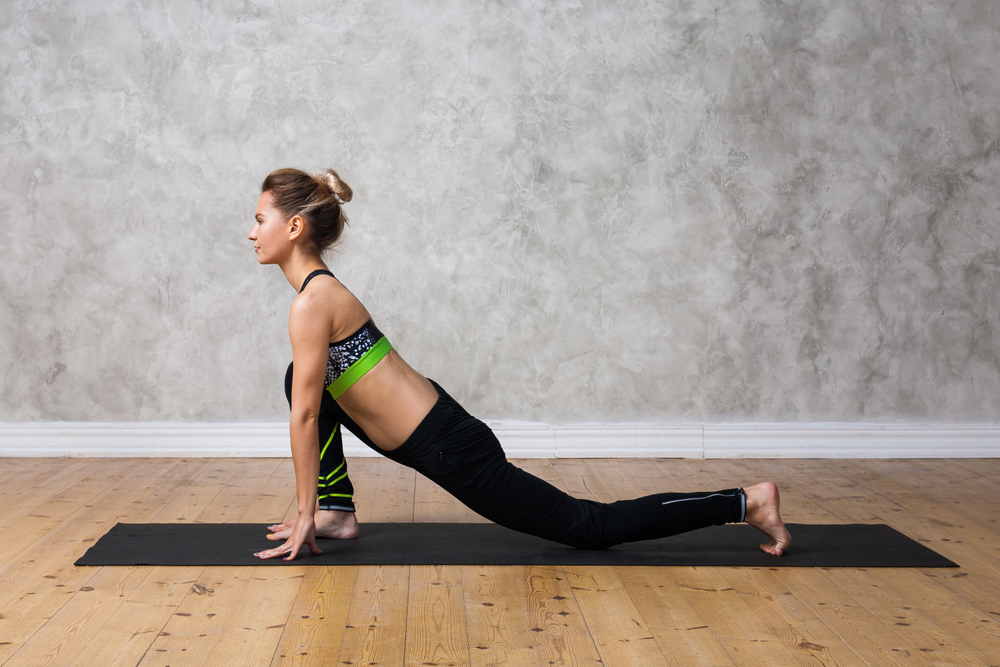
Chant: Om Bhaanave Namaha
Meaning: One who illumines, the bright one
Equestrian Pose influences the third eye chakra. It stretches the quads, psoas, and hips.
And it strengthens the knees and abdomen while improving your mental power.
Inhale and lift your head up to look forward. Ground your hands and step your right foot back behind you. Your front foot should stay grounded while your left leg bends.
You can choose to drop a knee and untuck your toes here. Or, you can keep your leg lifted with your toes tucked for more of a challenge.
#5 Dandasana — Stick Pose
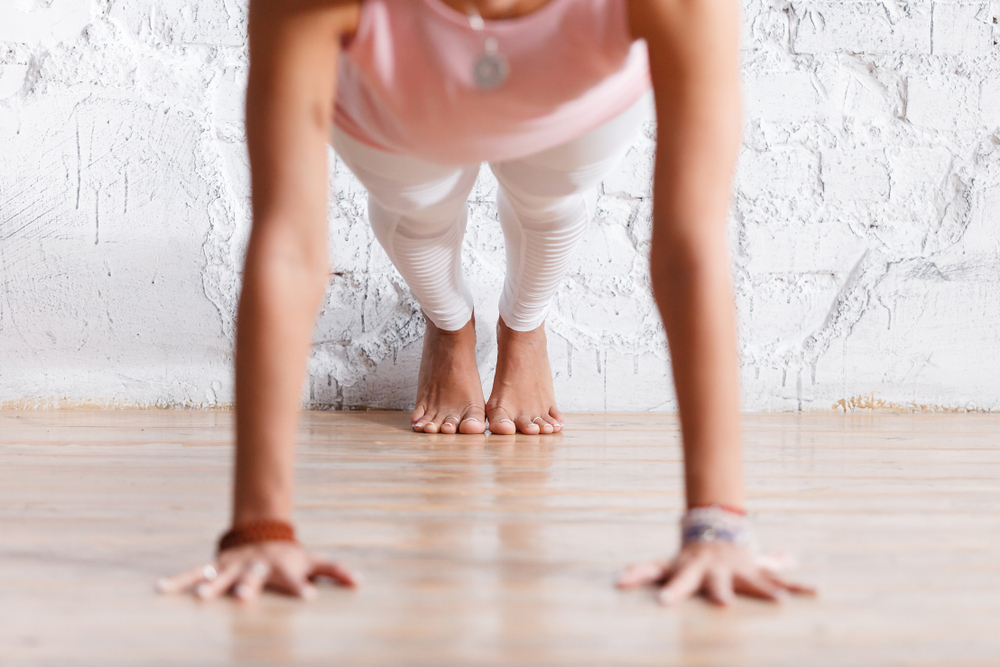
Chant: Om Khagaya Namaha
Meaning: Who is all-pervading, one who moves through the sky
The throat chakra is greatly influenced by this mantra and pose. Stick Pose strengthens your arms, shoulders, wrists, and core. It also improves your posture while increasing your balance and focus.
Exhale and ground both of your hands in the mat. Tuck your back toes and lift your back leg. Send your left leg back to meet your right leg. Come into a plank position.
Be mindful that you keep proper alignment here.
Make sure that your hands are under your shoulders. And your tailbone should be in a neutral position with the rest of your body.
Hold your breath here before going into the next pose.
#6 Ashtanga Namaskara — Salute with Eight Parts or Points
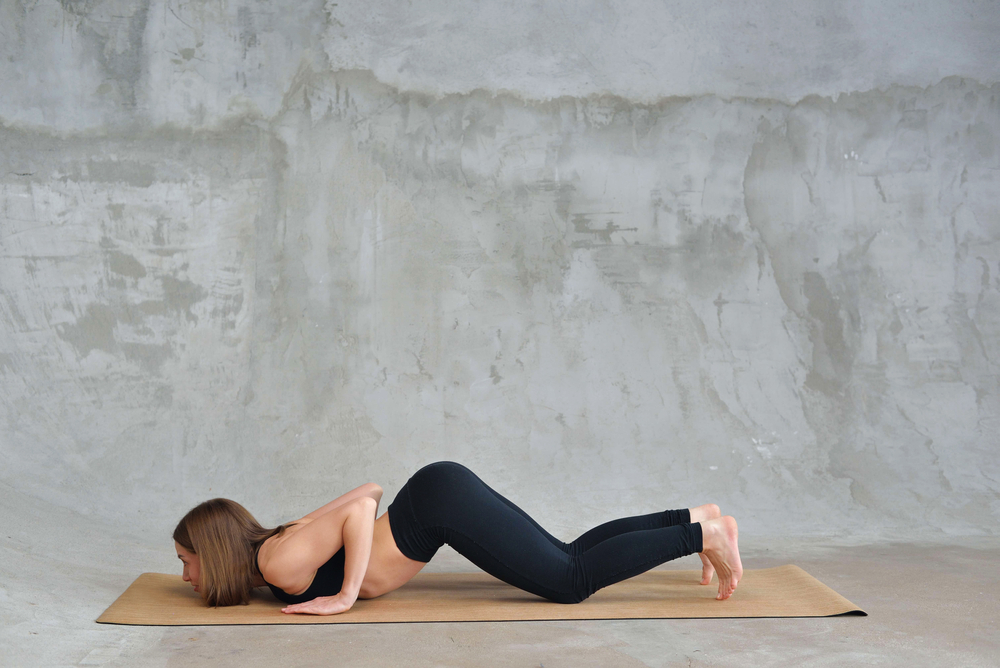
Chant: Om Pooshne Namaha
Meaning: Giver of nourishment and fulfillment
This pose guides the solar plexus chakra. It opens the chest and improves spine mobility. Additionally, it strengthens the core, legs, and chest and develops upper body strength.
Exhale as you drop your knees slowly to the floor. Then hug your elbows in and drop your chest and chin to the floor. Continue gazing forward. Keep your arms tucked into your sides. Your stomach, thighs, and shins should be lifted. The only body parts on the ground should be your toes, hands, knees, chest, and chin.
In this pose, suspend your breathing momentarily. Ensure that your abdomen is completely without air.
#7 Bhujangasana — Cobra Pose

Chant: Om Hiranyagarbhaaya Namaha
Meaning: Who has golden color brilliance
Cobra Pose guides the sacral chakra. It stretches the shoulders, chest, and abdomen while firming and toning the glutes.
It can also relieve tension in the back and spine.
Inhale and slide your entire body onto the ground. Untuck your toes and lift up through your chest. Straight your arms and come into Cobra.
For full Cobra, lift your head, chest, and abdomen. If this is too much, come into Baby Cobra. This is where your arms are bent and your backend is much milder.
Keep your shoulders dropped away from your ears. Continue to lift through your chest.
Press your legs and the tops of your feet into the mat.
#8 Adho Mukha Svanasana — Downward Facing Dog
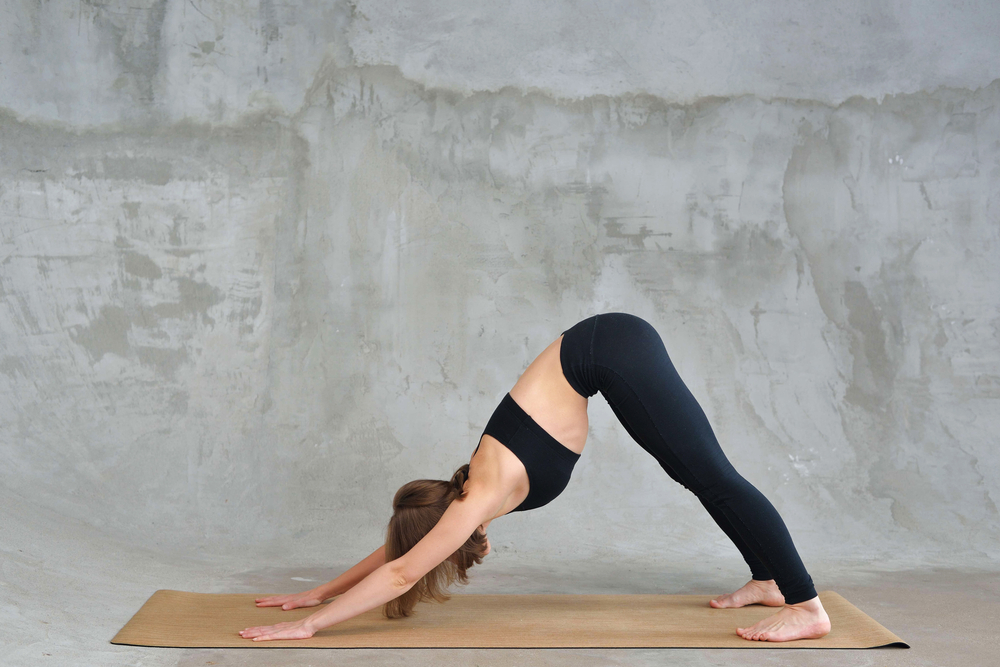
Chant: Om Mareechaye Namaha
Meaning: The giver of light with an infinite number of rays
The throat chakra is intimately linked to this pose and mantra. It strengthens the arms, core, legs, wrists, and shoulders. And it stretches the hamstrings, spine, and shoulders.
Overall, Downward Dog energizes the body and mind.
Exhale and tuck your toes. Send your hips up and back into Downward Facing Dog. Send your chest towards your thighs and lengthen through your arms and shoulders. Stay grounded in your hands by spreading your fingers wide.
Engage your core and thighs. Press your heels down towards the ground as much as you can.
#9 Ashwa Sanchalanasana — Equestrian Pose
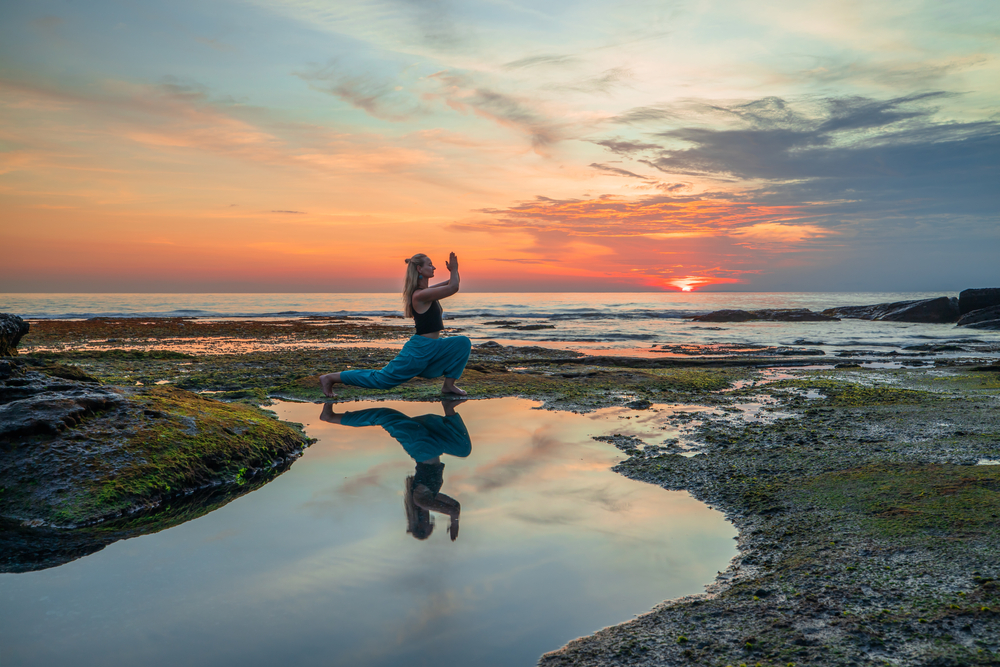
Chant: Om Aadityaaya Namaha
Meaning: The son of Aditi – the cosmic divine Mother
The third eye chakra is greatly influenced by this mantra and pose.
On your inhale, come back into a low lunge. Bend your knee and ground down through your foot. Remember that you can lift your back leg and tuck your toes for an added challenge.
#10 Hasta Padasana — Hand to Foot Pose
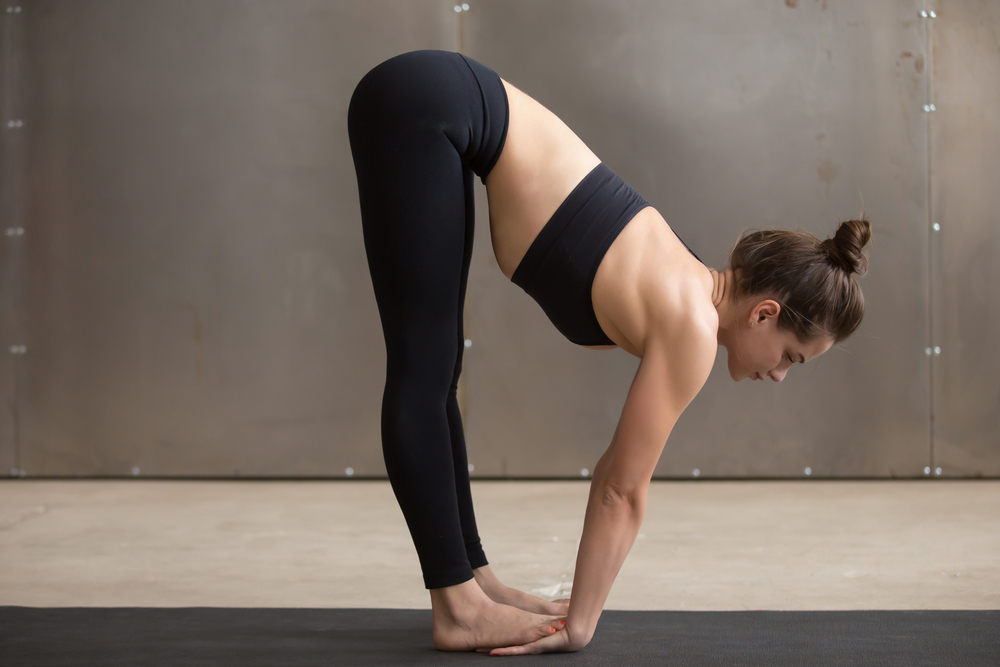
Chant: Om Savitre Namaha
Meaning: One who is responsible for life
Again, this pose is intimately linked to the sacral chakra.
Exhale and come back into a standing forward bend. Step your left foot up to meet your right foot. Then straighten both legs as you fold.
If possible, try folding a little deeper this time. Your body may be more warmed up by now.
#11 Hastauttanasana — Raised Arms Pose
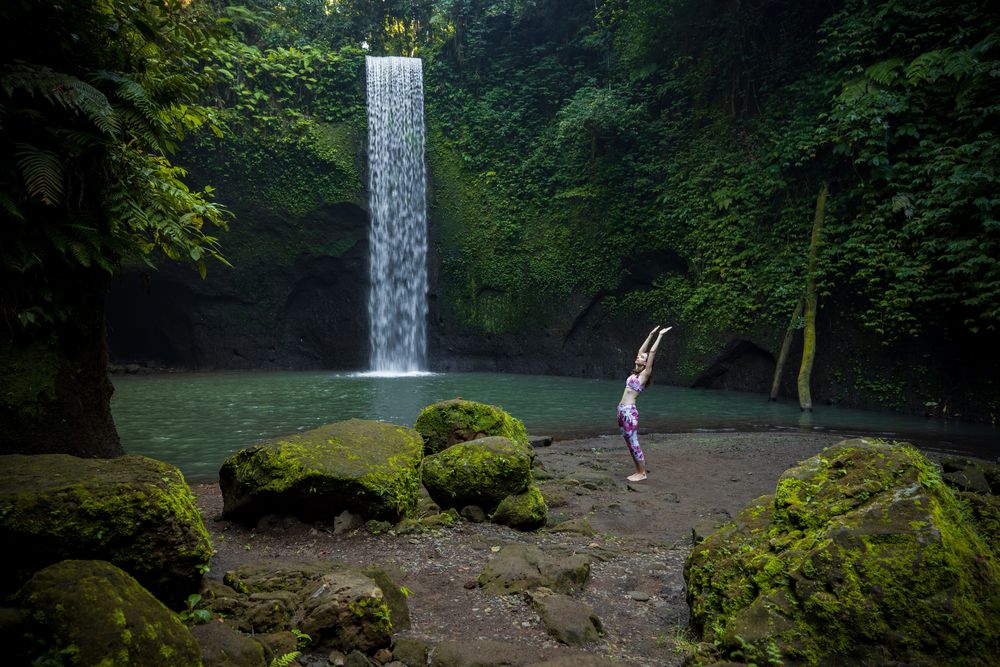
Chant: Om Aarkaaya Namaha
Meaning: Worthy of praise and glory
Connect with your throat chakra through this mantra and pose.
Inhale and reverse dive upwards into an upward salute. Spread your arms as wide as you can and lift your body upwards into a backend. Bring your arms overhead either to come together or with your palms facing each other.
#12 Tadasana — Mountain Pose
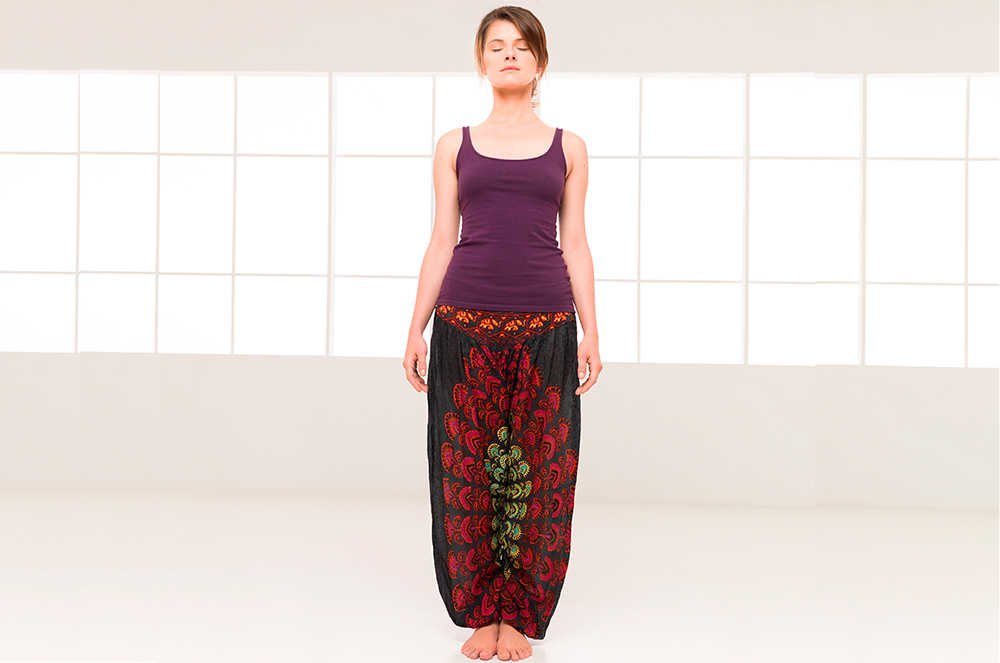
Chant: Om Bhaaskaraya Namaha
Meaning: Giver of wisdom and cosmic illumination
Finish your Sun Salutation by connecting once again with your heart chakra.
Exhale and come back to the center into a prayer pose.
Final Thoughts
Adding mantras to your Sun Salutation makes for an added experience of spirituality. This simple routine is universal in the yogi community. And it awakens your inner power to get your day started off right.
Surya Namaskar can reduce anxiety and stress because it serves as meditation in motion.
Additionally, this sequence can jump-start your metabolism. Having this staple routine brings clarity to what you have to do in the morning. If you are unsure where to start your yoga practice, start here.
Set a goal with the number of rounds you wish to accomplish.
This challenge will keep you motivated. It will get your blood flowing and will clear your mind for the day ahead.
Working out both sides also improves balance in the body. Going through the different poses on each side of the body balances muscles. This will help with overall posture and confidence.
It is best to practice Surya Namaskar outside when the sun is rising. Focus on how much energy the sun is providing you. And maintain this positive mindset throughout the day.
You will bring good energy into your life if you start your day strong with Surya Namaskar.
What's Your Reaction?
Meditation coach Emma Morrison is the go-to person for those living in Salt Lake City, Utah, who need to release stress and tension or simply dive deeper into their meditation practice. In her writing, you’ll receive useful information on how to live a more fulfilling life.






